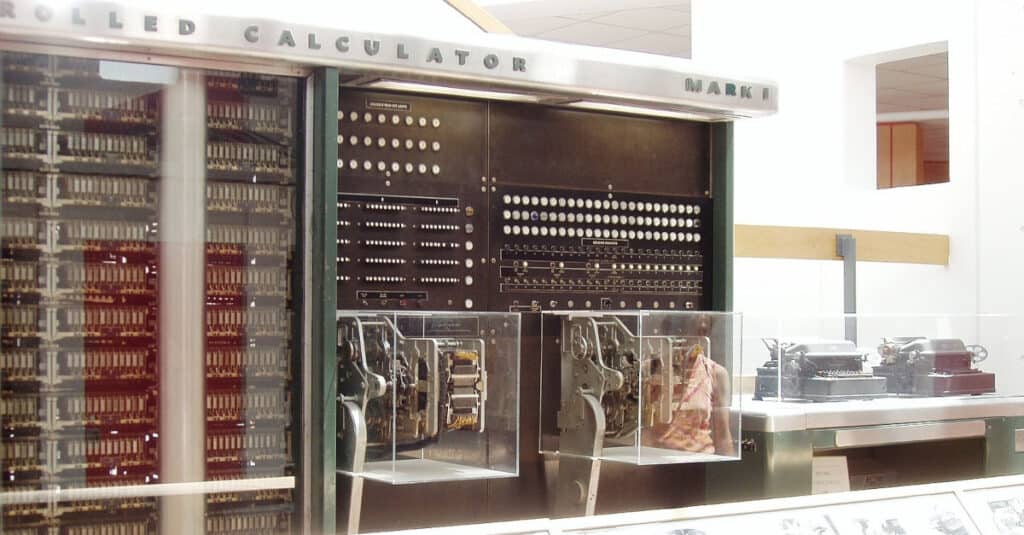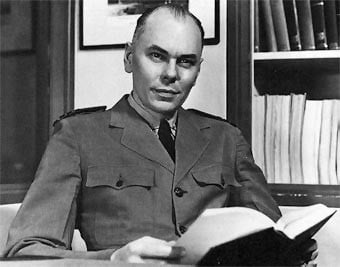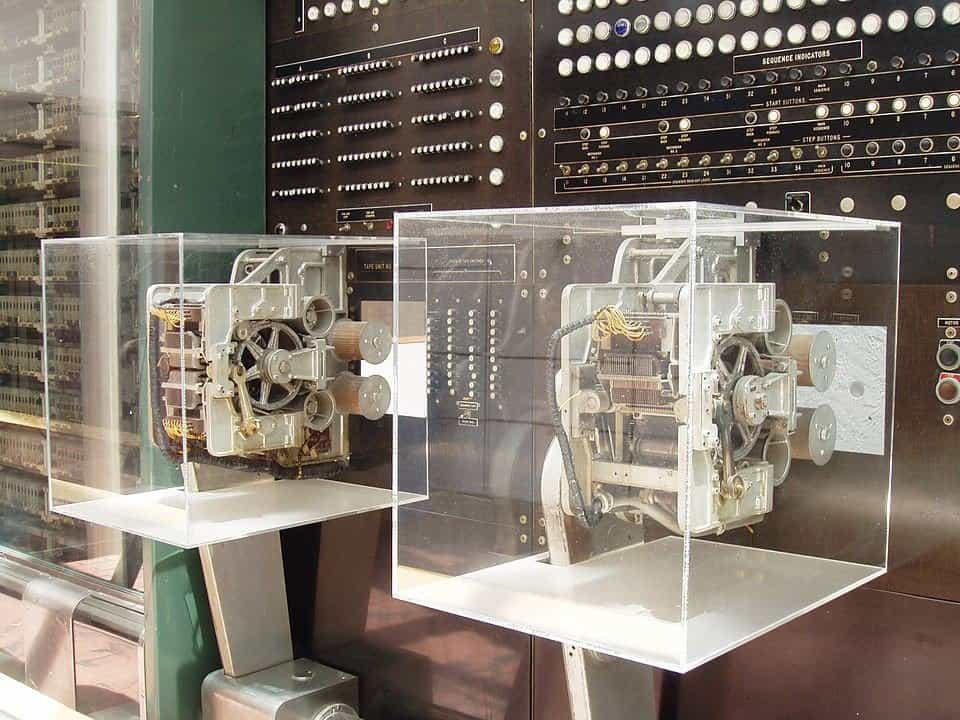
4 Facts about the Harvard Mark 1
- The Harvard Mark 1 weighed nearly five tons and was over 50 feet long.
- The Harvard Mark 1 played a key role in the development of nuclear warfare, as it was used to help design the first atomic bombs.
- The Harvard Mark 1 was the first computer that could be programmed to solve any number of problems, rather than built to solve one specific thing.
- The Harvard Mark 1 was used continuously by the US Navy until it was dismantled in 1959.
The History of Harvard Mark 1: What to know
The Harvard Mark 1, also known as the IBM Automatic Sequence Controlled Calculator (ASCC), was an early electromechanical computer designed by Howard Aiken (see the biography of Howard Aiken) and built by IBM in 1944 at their Endicott labs in New York.
Although not the first working computer, the machine was the first to automate the execution of complex calculations, making it a significant step forward for computing. Aiken was inspired to design and build the machine in part by the Difference Engine and Analytical Engine of Charles Babbage (see the biography of Charles Babbage).
The Mark 1 was used primarily to calculate and print mathematical tables, a type of table showing the results of various mathematical operations. It was also a part of the effort to develop nuclear weaponry and was used by John von Neumann (see the biography of John von Neumann) to determine whether implosion was a viable means of detonating the earliest atomic bombs.
Although slower than many other computers of its time, the Mark 1’s reliability meant that it saw use until 1959, when it was disassembled.

Harvard Mark 1 – How It Worked
Unlike electronic computers of the time, which used vacuum-tube arrays to solve calculations and perform operations, the Mark 1 was built using physical components derived from IBM’s existing punched card devices. The Mark 1’s operators fed sheets or rolls of paper which had been perforated by programmers into it, and the machine read its instructions by following the punched holes.
Mechanically, the Mark 1 was designed around a rotating switch connected to a drive shaft. These switches stored digits, timing, and other information and were connected into groups of twenty-four called an ‘accumulator.’
As the shaft rotated, clutches triggered the accumulators when they needed to perform an operation or transfer a number to a different accumulator. In addition to the tape, the Mark 1 required cables to be plugged into boards along its length.
Advantages and Disadvantages of the Harvard Mark 1
One of the Mark 1’s biggest disadvantages was that, compared to electronic computers, it was significantly slower. This made completing calculations a time-consuming task. Other disadvantages were its loud noise while working, its immense size, and the need for large amounts of energy.
Because the Mark 1 was programmed using tape, there was also no way to jump around in the program. Instead, programmers had to stick to relatively simple sets of instructions that could be read in a linear fashion.
The Mark 1’s main advantages were that it could be programmed to complete different tasks and the fact that its parts were made to reliable standards by IBM engineers. These advantages outweighed its disadvantages, especially since most of its less positive aspects were shared by other early computers, and were responsible for its continued use through to 1959, a full 15 years after its construction.
After several years, the Mark 1 was modified slightly by the addition of a secondary mechanism that allowed programs to call looped sets of instructions at various points during the main program sequence, speeding up operations and allowing for more complexity.

Harvard Mark 1 – Historical Significance
Although the Mark 1 wasn’t the first working computer to be designed or built, it was important in the history of computer science because it was the first that could be used to solve any arbitrary mathematical problem.
This flexibility gave the Mark 1 considerable advantages over its predecessors and arguably make it the first working example of a programmable computer.
Aiken turned the success of the Mark 1 and its successors into a career that helped move the creation and use of computing devices from a theoretical concept to a practical idea with commercial, industrial, and military applications.